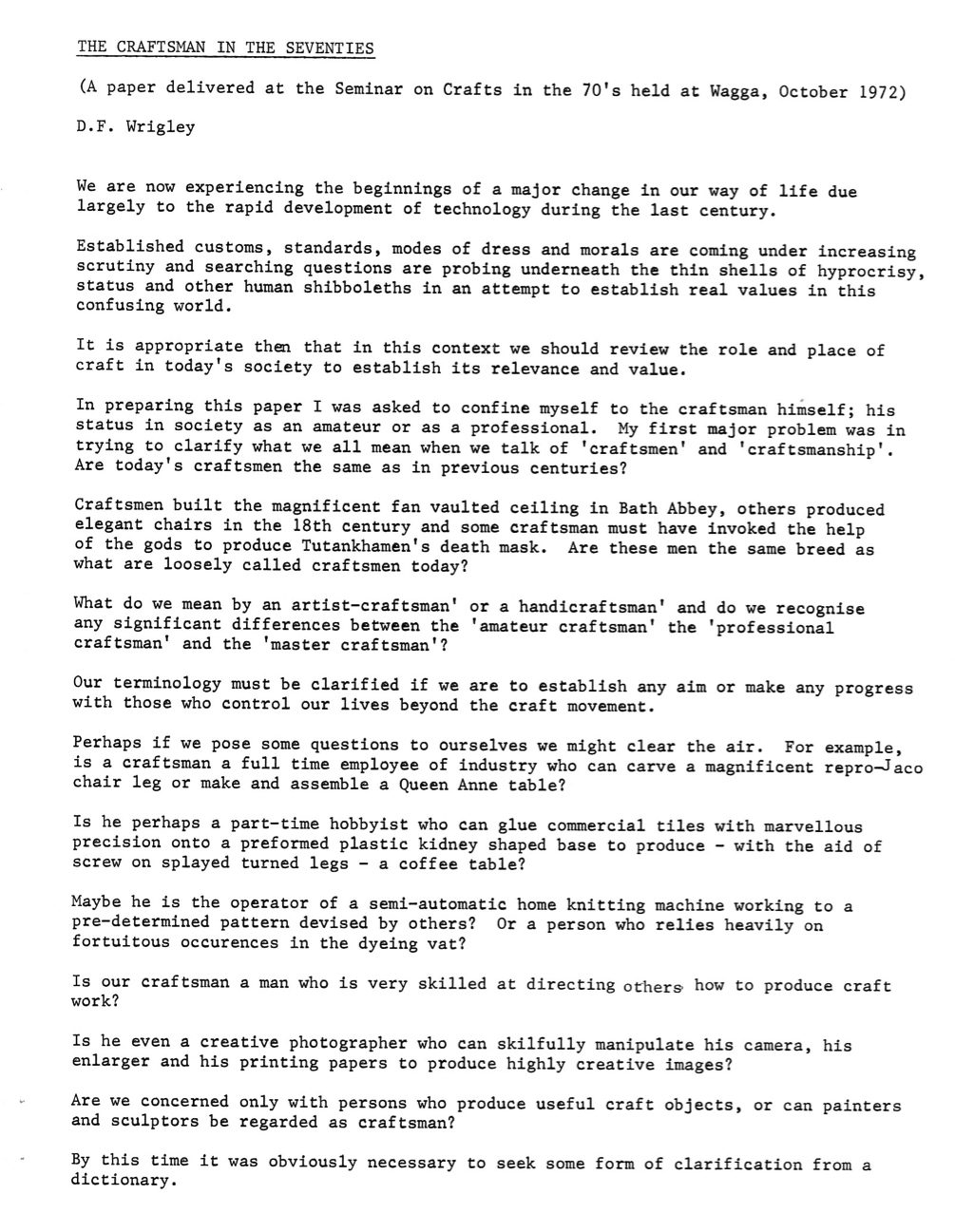The craftsman in the seventies
The 1960s and 70s were very active for me, being involved with the Canberra Art Club, the Craft Association of the ACT and then assisting in the formation of the Crafts Council of Australia (in the ACT) and the ACT Wood Group as the community interest in the crafts grew during that period.
However, a few of us – Fred Ward, John Scollay, Theo Bischoff, Lady Margaret Frankel and me – became somewhat concerned at the rather loose way in which the word ‘craftsman’ was being used. Our view was that to be a good craftsman worthy of the title should not only be skilled in how he (or she) made an article of craft, he should also be skilled at conceiving it as a work of art eg. it should be well designed with a high conceptual skill.
Eventually, Fred and I came up with 3 categories of craft person – and so I wrote a paper to crystallise our thinking – which was very clear to us – there are those who are skilled at designing, those who are skilled at making and, at the pinnacle of all these skills – those who are skilled at both – the real craftsman who can design and make with great skill.
But, you will notice one further skill we all saw as essential – all skills should be applied with consistency – one ‘flash in the pan’ does not warrant the title. It must be earned over a period of time.
The 6 pages of our conclusions are attached.
Its first airing was as a lecture I gave in Wagga in October 1972 at a seminar on the crafts in the 70s.
On reading it after some 46 years I see no reason to change my mind, but its argument has not been adopted by the general community. It could be seen that those who use the title ‘Craftsman’ but have not earned it would perhaps lose face by adopting what they perceive as a lesser ranking.
Indeed, I often see works posing as “craftsmanship” in contemporary exhibitions which are very skilfully made but so badly designed as to be unworthy of being called pieces of craftsmanship. We really should adopt the categories of Craft designer, Craftmaker, and Craftsman. I know my place is as a Craft designer and would abstain from the use of Craftmaker and Craftsman.
Time and cultural context should obviously enter this debate – like evaluating an item which is clearly several centuries old and a product of a completely different culture which should be given every consideration – perhaps in a spare moment I will give it the attention it deserves.


